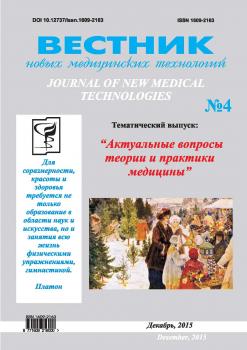A trainer-athlete social interaction has systemic psychological and physiological nature. The systemic quantization of the behavior concept, offered by K.V. Sudakov, was the methodological basis for creation of the trainer-athlete social interaction physiological model. It is shown that the trainer’s verbal instruction promotes the systemic organization of the trainer-athlete social interaction (SYSTEMOQUANT), which has higher level hierarchy in relation to the athlete’s training activity. The athlete’s sport activity in SYSTEMOQUANT is presented as the sequence of athlete’s systemic quantums, which are characterized by stage activity results and have lower hierarchy in relation to the end result of SYSTEMOQUANT. All this allows to speaking about "inclusion" systemic quantums of athlete as a system of organizations lower level in SYSTEMOQUANT social interaction coach-athlete. The quantitative integrated assessment of parameters of reached sports results and “physiological cost" of these results allows to carry out timely correction of athlete’s sport activity. The analysis of dynamics of result’s parameters and "physiological cost” allow to estimate "the load worth» of each athlete’s training activity stage and to reveal critical stages of physical activity. It optimizes the athlete’s training process and accelerates the acquisition of high level sport training for their. The author notes that the dependence of the "physiological cost" sports result from its parameter is defined as the individual abilities of the athlete, his / her functional status at the time of exercise and sport. The physiological model of trainer-athlete social interaction can be used in a training process of athletes. It should be noted that such a system approach to studying of a social interaction problem can be used, not only in sport, but in the educational and production practice of teaching, where the training verbal instruction is actively used. Using the monitoring with feedback, the instructor (teacher) will always have information about the success of his instructions and student’s physiological cost.
social interaction, trainer, athlete, functional system, systemoquant, hierarchy, result, "physiological cost"
1. Anokhin P.K. Biologiya i neyrofiziologiya uslovnogo refleksa. M: Meditsina, 1968. 547 s.
2. Anokhin P.K. Khimicheskiy kontinuum mozga kak mekhanizm otrazheniya deystvitel´nosti. Voprosy filo-sofii. 1970. N6. C. 107-118.
3. Anokhin P.K. Izbrannye trudy. Sistemnye mekha-nizmy vysshey nervnoy deyatel´nosti. M: Nauka, 1979. 453 s.
4. Veber M. Izbrannye proizvedeniya. O nekotorykh kategoriyakh ponimayushchey sotsiologii. M.: Progress, 1990. S. 707-735.
5. Gomel´skaya T.V. Problemy vzaimootnosheniya trenera i sportsmena. Problemy i perspektivy razvitiya fizicheskoy kul´tury i sporta v XXI veke: Sb. nauchnykh trudov. Volgograd: 2004, vyp. 2. S. 77-80.
6. Gogunov E.N., Mart´yanov B.I. Psikhologiya fizicheskogo vospitaniya i sporta: Uchebnoe posobie dlya studentov vysshikh pedagogicheskikh uchebnykh zavedeniy. M: Izd. Tsentr «Akademiya», 2000. 288 s.
7. Sudakov K.V. Sistemnoe postroenie funktsiy che-loveka. Aktovaya rech´. M: MMA im. I.M. Sechenova, 1998. 24 s.
8. Sudakov K.V. Izbrannye trudy. T. 1: Razvitie teorii funktsional´nykh sistem. M.: GUNII normal´noy fiziologii im. P.K. Anokhina RAMN. 2007. 343 s.
9. Fudin N.A., Sudakov K.V., Khadartsev A.A., Klassina S.Ya., Chernyshev S.V. Indeks Khil´debrandta kak integral´nyy pokazatel´ fiziologicheskikh zatrat u sportsmenov v protsesse vozrastayushchey etapno-dozirovannoy fizicheskoy nagruzke. Vestnik novykh meditsinskikh tekhnologiy. 2011. T.18. N3. C. 244-247.
10. Shvyrkov V.B. Neyrofiziologicheskoe izuchenie sistemnykh mekhanizmov povedeniya. M.: Nauka, 1978. 239 s.
11. Khadartsev A.A., Fudin N.A., Radchich I.Yu. Fiziologicheskie osnovy vizual´nogo vospriyatiya pri podgotovke sportsmenov s pozitsiy sinergetiki. Vestnik novykh meditsinskikh tekhnologiy. 2012. T. 19. № 2. S. 17-20.
12. Khadartsev A.A., Nesmeyanov A.A., Es´kov V.M., Fu-din N.A., Kozhemov A.A. Printsipy trenirovki sportsmenov na osnove teorii khaosa i samoorganizatsii. Teoriya i praktika fizicheskoy kul´tury. 2013. № 9. S. 87-93.





